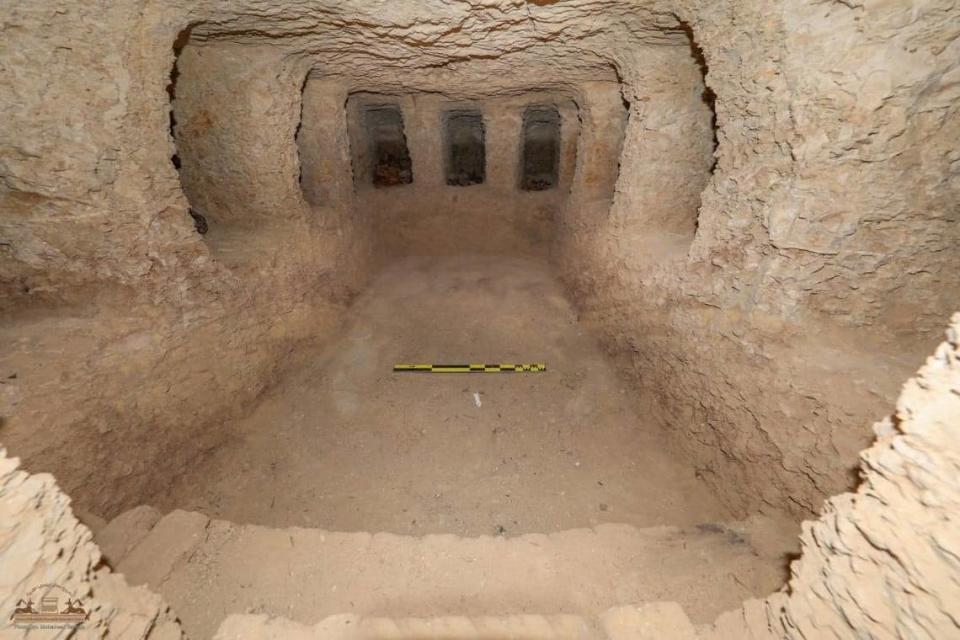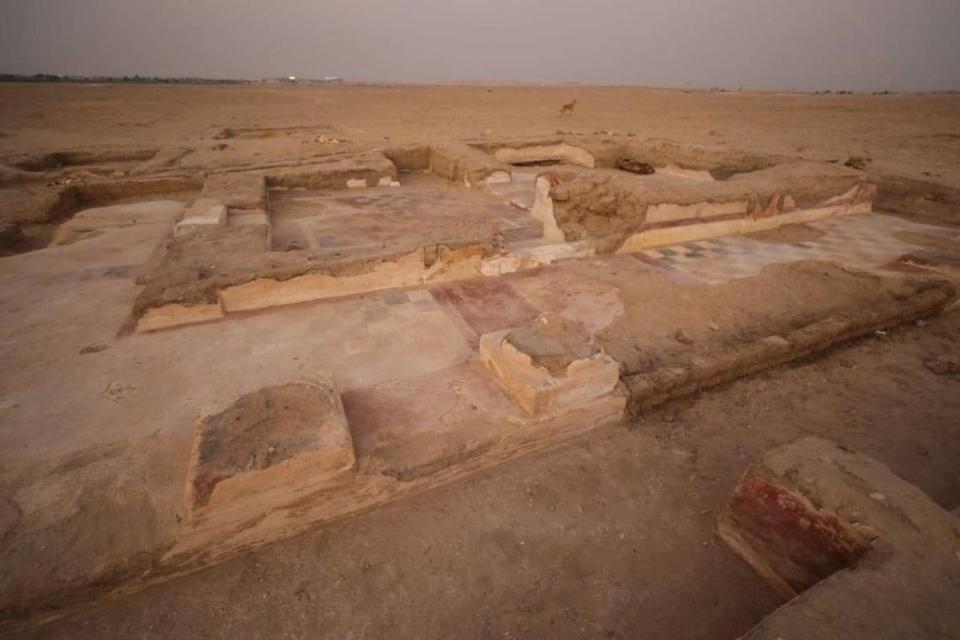Catacomb-style building re-emerges from the sand to reveal ancient Egyptian coffins
Archaeologists in Egypt uncovered a massive funeral building with ancient coffins in catacomb-style graves, photos show.
Sifting through the sands of Faiyum (also spelled Fayoum), researchers excavated a huge structure used for ancient burials, according to a Thursday, Dec. 1 news release from Egypt’s Ministry of Tourism and Antiquities. The building had a mass grave in a catacomb-style structure, Dr. Basem Jihad, the head of the mission, said in the release.
Tan-colored blocks formed the ground level and lower levels, photos show. Rough-hewn rocks formed the inside of the catacomb-like spaces.


The building’s floor was made of a colored mortar and interchangeable tiles, Dr. Adel Akasha, head of the Central Department of Egyptian Antiquities, said in the release. Photos show the dusty checker-board flooring interspersed with red patches. The building led to its own narrow street, Akasha said.

Excavations revealed ancient coffins in several different styles, Jihad said. Some coffins had human forms while others used square-like forms.
Photos show one red-colored coffin with a mummy shape on it. The coffin has an intricate, multi-colored design on the mummy’s head, chest and legs. Another square-style coffin had a green and white striped frame on the top with wreath-like decorations on the side.

A third coffin had a mummy shape, fully covered in red, white and blue designs with four distinct scenes, photos show. Based on the variety of coffins, Jihad estimated the funeral building was used from the third century B.C. until the third century A.D. — a millennia-long period beginning in the ancient Egyptian Ptolemaic era and stretching through the Greco-Roman era.

Researchers also uncovered mummy portraits, photos show. These models, known as the Faiyum portraits, are the second mummy portraits ever discovered, Akasha said. The first such mummy portraits were found over 115 years ago.
The discoveries in Faiyum revealed a glimpse into the social, economic and religious conditions of ancient Egypt’s inhabitants, Dr. Mostafa Waziri, Secretary General of the Supreme Council of Antiquities, said in the release.

Faiyum is about 70 miles southwest of Cairo.
Facebook Translate and Google Translate were used to translate the news release from Egypt’s Ministry of Tourism and Antiquities.
Gold-tongued mummies found in 2,000-year-old cemetery in Egypt, archaeologists say
King Tut’s tomb discovered 100 years ago. Take a look at unique treasures found inside
Suspicious fruit ship had 1,700 smuggled Egyptian artifacts on board, officials say

